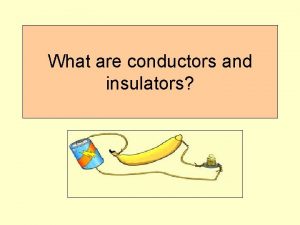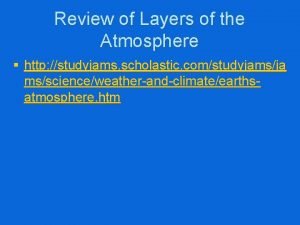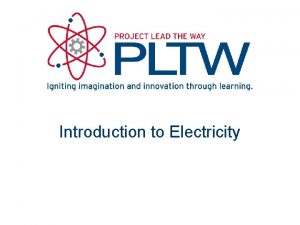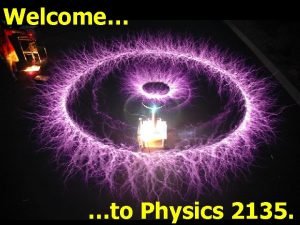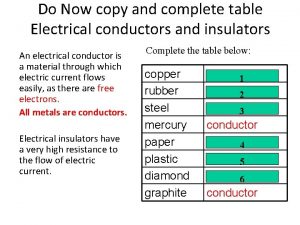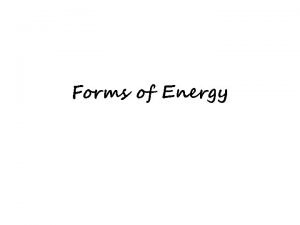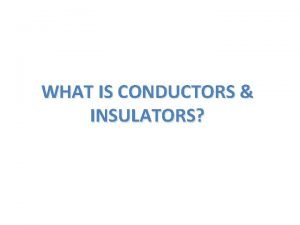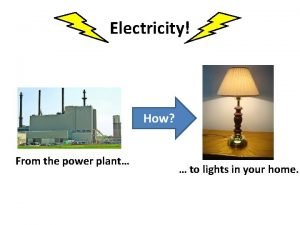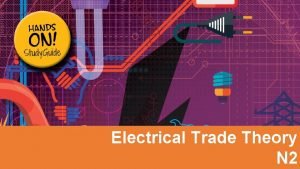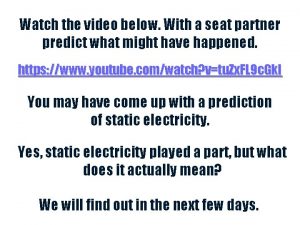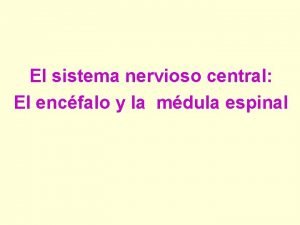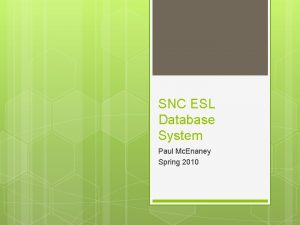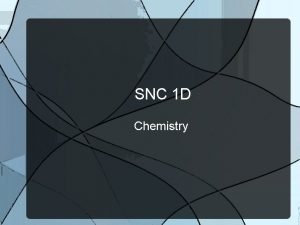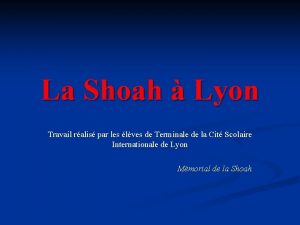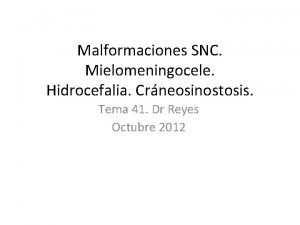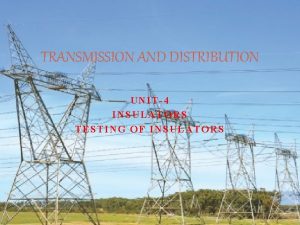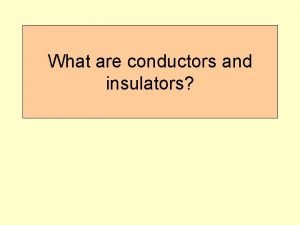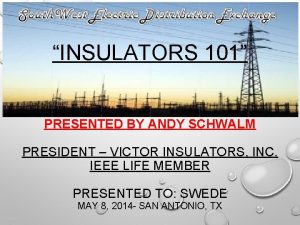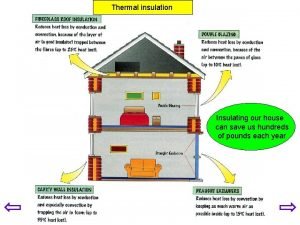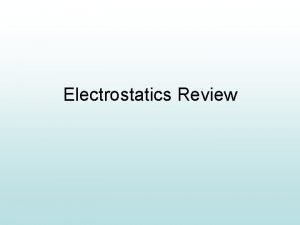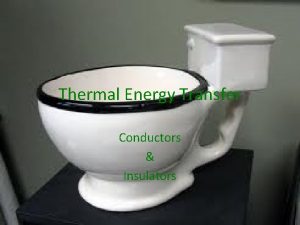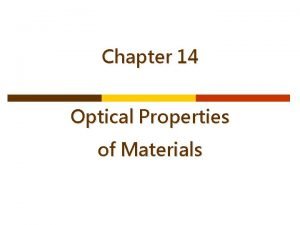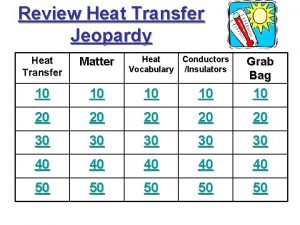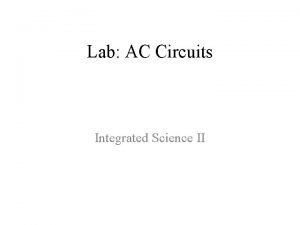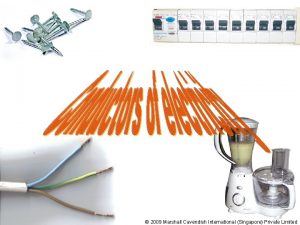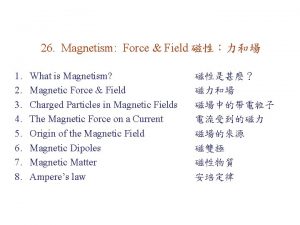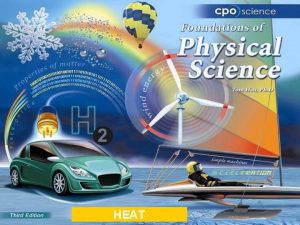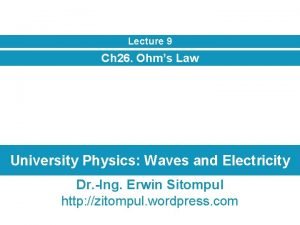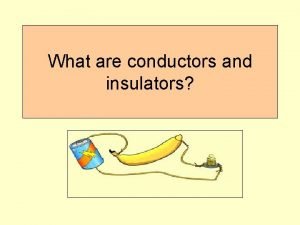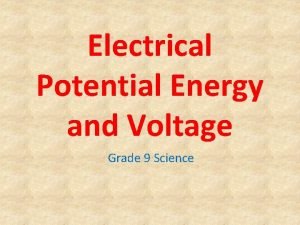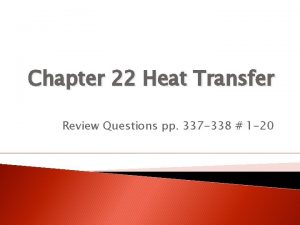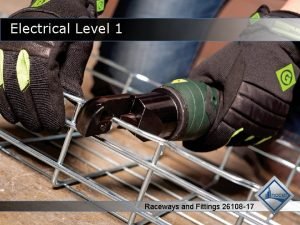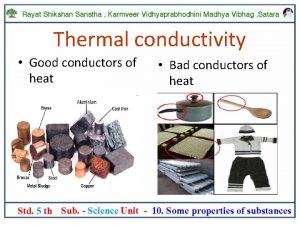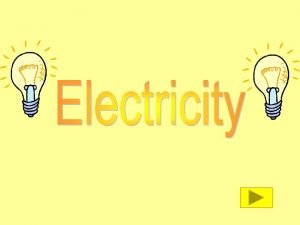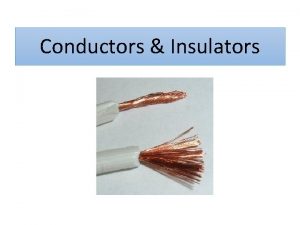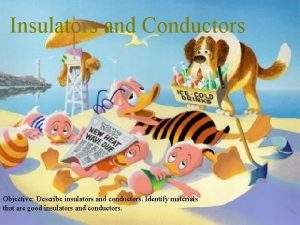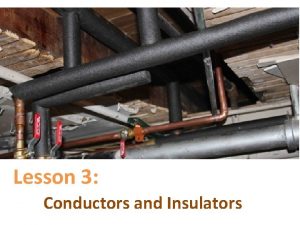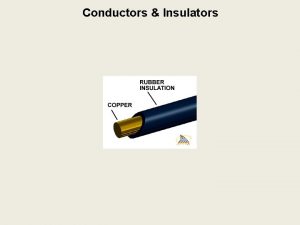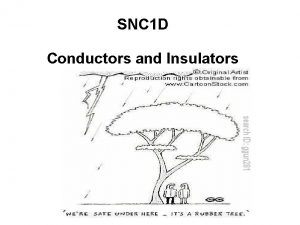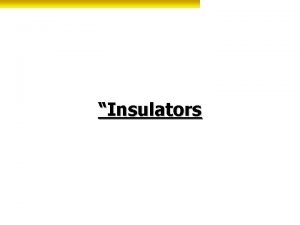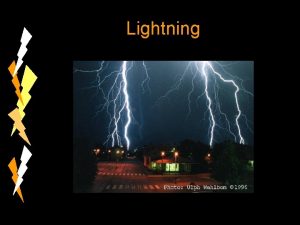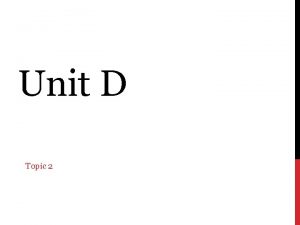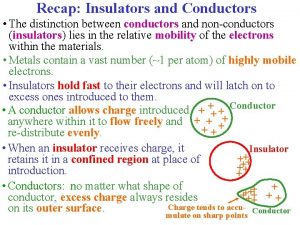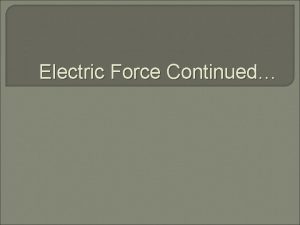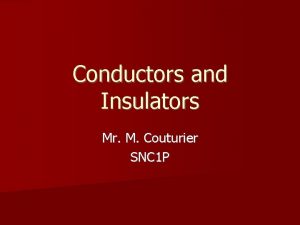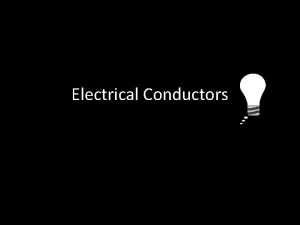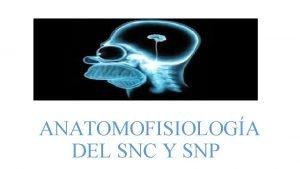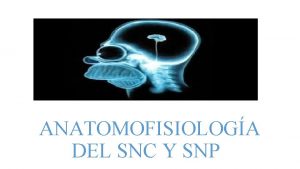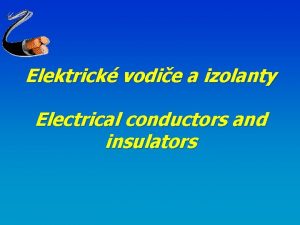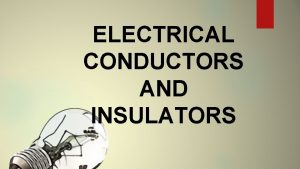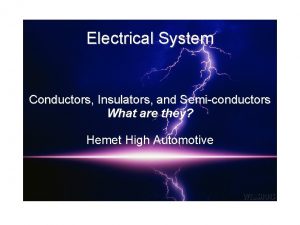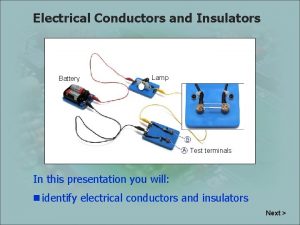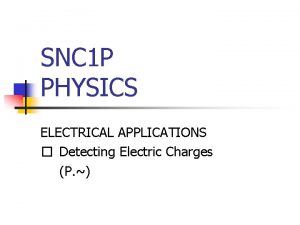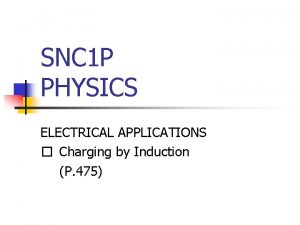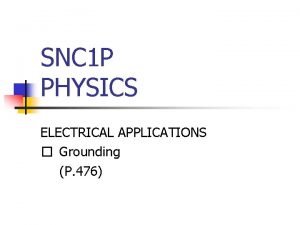SNC 1 P PHYSICS ELECTRICAL APPLICATIONS Insulators Conductors










































- Slides: 42

SNC 1 P PHYSICS ELECTRICAL APPLICATIONS � Insulators & Conductors (P. 484 -485)

Electrical Insulators & Conductors Scientists have categorized most materials into two categories based on their conductivity: conductors and insulators. Conductivity is the ability of materials to allow electrons to move freely in them. Copper wire (a) is a conductor while ceramic (b) is an insulator. December 27, 2021 1 PPHYS - Insulators & Conductors 1

Electrical Insulators & Conductors CONDUCTIVITY v ability of a material to allow electrons to move freely in them v two categories �insulators and conductors December 27, 2021 1 PPHYS - Insulators & Conductors 2

Electrical Insulators Materials that hold onto their electrons and do not allow them to move easily are called electrical insulators. This is because the electrons (–) are bound tightly to the nuclei (+). An electrical insulator is a solid, liquid, or gas that resists or blocks the movement of electrons. Dry wood, glass, and plastic are all examples of electrical insulators. An insulator can hold a static charge because the static charges remain nearly fixed in place. December 27, 2021 1 PPHYS - Insulators & Conductors 3

Electrical Insulators INSULATOR v material that resists or blocks the movement of electrons v can hold a static charge (since the charges are unable to move) v plastic, glass, rubber, pure water, dry air, … December 27, 2021 1 PPHYS - Insulators & Conductors 4

Electrical Conductors Materials that allow electrons to change positions are called conductors. In this case the electrons (–) are not as tightly bound to the nuclei (+) and so they can move away from the nuclei. Metals such as copper are considered good conductors since they hold their outer electrons loosely. So metals, in general, are good conductors of electricity. Other common metal conductors are aluminum, silver, and gold. December 27, 2021 1 PPHYS - Insulators & Conductors 5

Electrical Conductors CONDUCTOR v material that allows electrons to change position easily v most metals, tap water (contains minerals), moist air, … December 27, 2021 1 PPHYS - Insulators & Conductors 6

Insulator or Conductor? You may have noticed that your hair does not stick to your hat on wet, humid days. In humid air, water molecules have more opportunity to bump into nearby objects. During these “bumps, ” water molecules are able to transfer electrons from negatively charged objects to positively charged objects. As a result, charged objects tend to lose their charge quickly in humid weather. December 27, 2021 1 PPHYS - Insulators & Conductors 7

Insulator or Conductor? However, in dry weather, there are fewer water molecules in the air, so charged objects are less likely to lose charge by bumping into water molecules. So the charged objects stay charged in dry weather, making your hair more prone to static electricity. December 27, 2021 1 PPHYS - Insulators & Conductors 8

Electrical Insulators & Conductors Some materials – known as fair conductors – allow only some movement of electrons. In a fair conductor, the electrons do not move as freely as in a conductor, but they are not held as tightly in place as they are in an insulator. The table below gives some examples of conductors, fair conductors, and insulators. Conductors Fair Conductors Insulators copper water with dissolved minerals rubber aluminum moist air wood iron human body plastic mercury carbon pure water other metals soil metal oxides, such as rust December 27, 2021 1 PPHYS - Insulators & Conductors 9

Electrical Insulators & Conductors NOTE! There are variations within each category, as some materials are better or poorer conductors than others. Do you notice anything strange though? Conductors Fair Conductors Insulators copper water with dissolved minerals rubber aluminum moist air wood iron human body plastic mercury carbon pure water other metals soil metal oxides, such as rust December 27, 2021 1 PPHYS - Insulators & Conductors 10

Electrical Insulators & Conductors Water is an insulator only if it is pure! However, most water has dissolved minerals in it, so it becomes a fair conductor. This is why you do not want to be in a lake during a thunderstorm. If lightning hits the water, the electric charges from the lightning will spread out through the water and cause you serious or fatal injury. Conductors Fair Conductors Insulators copper water with dissolved minerals rubber aluminum moist air wood iron human body plastic mercury carbon pure water other metals soil metal oxides, such as rust December 27, 2021 1 PPHYS - Insulators & Conductors 11

Electrical Insulators & Conductors This is also why you should not use water to try to put out an electrical fire (the electric charges will travel through the water and cause you serious or fatal injury). You also need to take care not to operate electrical appliances near water or with wet hands. December 27, 2021 1 PPHYS - Insulators & Conductors 12

Electrical Insulators & Conductors PRACTICE 1. Why should you not use water to put out an electrical fire? the electric charges will travel through the water and cause you serious or fatal injury December 27, 2021 1 PPHYS - Insulators & Conductors 13

Electrical Insulators & Conductors PRACTICE 2. What is the difference between a conductor and a fair conductor? in a fair conductor the electrons do not move as freely as they do in a conductor December 27, 2021 1 PPHYS - Insulators & Conductors 14

Electrical Insulators & Conductors PRACTICE 3. While fishing in an aluminum boat in the middle of a lake, you notice storm clouds forming nearby. Why is it a good idea to get to shore as fast as possible? lake water is a fair conductor so if lightning hits the water, the electric charges from the lightning will spread out through the water and cause you a serious or fatal injury December 27, 2021 1 PPHYS - Insulators & Conductors 15

Electrical Insulators & Conductors PRACTICE 4. Would your answer to the previous question change if the lake somehow became filled with distilled water with no ions present? Explain why or why not. no – even though pure water is an insulator lightning will tend to strike the tallest object (which is you, sitting in a boat, on a lake) December 27, 2021 1 PPHYS - Insulators & Conductors 16

Electrical Insulators & Conductors PRACTICE 5. An electric fence consists of a metal wire and a plastic insulator. (a) What is the purpose of each? (a) the metal wire allows electrons to move and the plastic insulator prevents the movement of electrons into ground along the metal rod December 27, 2021 1 PPHYS - Insulators & Conductors 17

Electrical Insulators & Conductors PRACTICE 5. An electric fence consists of a metal wire and a plastic insulator. (b) If you use an insulator to touch the electric fence, will you receive a shock? Explain. (b) no – insulators do not allow the flow of electrons December 27, 2021 1 PPHYS - Insulators & Conductors 18

Electrical Insulators & Conductors PRACTICE 6. Electricians often use screwdrivers that have thick rubber handles. Explain why. rubber is an insulator – it protects them from getting shocked December 27, 2021 1 PPHYS - Insulators & Conductors 19

�Check Your Learning 1. Is each of the following items a conductor or an insulator? conductor (a) iron nail insulator (b) glass jar insulator (c) dry air conductor (d) gold ring conductor (e) carbon rod insulator (f) wooden spoon December 27, 2021 1 PPHYS - Insulators & Conductors 20

�Check Your Learning 2. A golfer and her caddy see lightning nearby. The golfer is about to take a shot with a metal club, while her caddy is holding a plastichandled umbrella. Which person is at a greater risk? Explain your answer. the golfer with the metal club – metal is a conductor December 27, 2021 1 PPHYS - Insulators & Conductors 21

�Check Your Learning 3. Two new materials have been discovered. One is shiny and has a metallic look, while the other is dull and has a non-metallic look. Although you think that one is a conductor and the other is an insulator, you want to be certain. Describe a test you could do to test the conductivity of these two materials. December 27, 2021 1 PPHYS - Insulators & Conductors 22

Activity: Conductors & Insulators (1 PPHYS-ASG 1) INSTRUCTIONS A. Read the activity “ 1 PPHYS - ASG 1 (Conductors & Insulators)”. B. Follow the instructions given (i. e. method 1 to 5). C. Answer analysis questions 1 to 3. D. Submit a formal lab report using the QHMMORCA format. Be sure to rewrite the method in 3 rd person past passive and don’t forget the diagram. NOTE! If this is the first formal report for please skip to page 26. A much more structured format is provided there. December 27, 2021 1 PPHYS - Insulators & Conductors 23

Activity: Conductivity (1 PPHYS-ASG 2) INSTRUCTIONS A. Read the activity “ 1 PPHYS - ASG 2 (Conductivity)”. B. Follow the instructions given (i. e. method 1 to 10). C. Answer analysis questions 1 and 2. D. Submit a formal lab report using the QHMMORCA format. NOTE! You will need to record the list of chemicals used and rewrite the method in 3 rd person past passive (see practice formal report). December 27, 2021 1 PPHYS - Insulators & Conductors 24

�Check Your Learning TEXTBOOK P. 488 Q. 1 December 27, 2021 1 PPHYS - Insulators & Conductors 25

Activity: Practice Formal Lab (QHMMORCA) ISSUE Now that you have completed the experimental portion of the activity, it is time to complete the communication portion of the activity. Recall that one of the most important characteristics of scientific investigation is that scientists share their information – not only the evidence, but also the process by which evidence was obtained. If the investigation is to be repeated by others, it is just as important to share the design and procedures. NOTE! We will be using the QHMMORCA method to share our information (refer to the “Lab Report Outline” handout you received earlier). December 27, 2021 1 PPHYS - Insulators & Conductors 26

Activity: Practice Formal Lab (QHMMORCA) INSTRUCTIONS A. As a class, you will write up a “practice” formal report of the experiment you just completed. B. When you are finished be sure to submit your “practice” formal report to your teacher so that they can check it for completeness and accuracy. NOTE! You may use either a pen or pencil for this practice report but a real/true formal report will require the use of a pen or computer. The use of a ruler when designing your observation tables will also be necessary. December 27, 2021 1 PPHYS - Insulators & Conductors 27

Activity: Practice Formal Lab (QHMMORCA) LET’S BEGIN!! December 27, 2021 1 PPHYS - Insulators & Conductors 28

Activity: Practice Formal Lab (QHMMORCA) Name Conductor/Insulator Lab Date Question What types of materials in the classroom are conductors or insulators? Hypothesis If a material is a conductor then a light bulb should light up because a conductor allows the flow of electrons (and an insulator does not). December 27, 2021 1 PPHYS - Insulators & Conductors 29

Activity: Practice Formal Lab (QHMMORCA) Materials NOTE! If the list of materials are given to you (i. e. in a handout or from the textbook) then you can just use the phrase, Refer to the materials as given to us in the handout/textbook. If necessary, be sure to make note of any changes made to the materials. However, if the list is short it is just as easy to write them out. December 27, 2021 1 PPHYS - Insulators & Conductors 30

Activity: Practice Formal Lab (QHMMORCA) Materials In this case the list is short so … December 27, 2021 1 PPHYS - Insulators & Conductors 31

Activity: Practice Formal Lab (QHMMORCA) Materials 1 9 V battery December 27, 2021 2 alligator clips 1 light bulb 1 PPHYS - Insulators & Conductors 32

Activity: Practice Formal Lab (QHMMORCA) Method NOTE! Similar to Materials, if the method is given to you (i. e. in a handout or from the textbook) then you can just use the phrase, Refer to the method as given to us in the handout/textbook. If necessary, be sure to make note of any changes made to the method. However, if requested, you may have to rewrite the method in 3 rd person past passive (ie make becomes made, attach becomes attached, …). December 27, 2021 1 PPHYS - Insulators & Conductors 33

Activity: Practice Formal Lab (QHMMORCA) Method In this case you will need to rewrite the method so, . . . December 27, 2021 1 PPHYS - Insulators & Conductors 34

Activity: Practice Formal Lab (QHMMORCA) Method 1. Made a table to record the observations (see observation table). 2. Attached the objects together as shown (see diagram). 3. … You get the idea so now you can finish this on your own. December 27, 2021 1 PPHYS - Insulators & Conductors 35

Activity: Practice Formal Lab (QHMMORCA) Observations & Results NOTE! If your observation table is too large to fit in the remaining space then you can direct the reader to the location of the table by using the phrase, Refer to page __. December 27, 2021 1 PPHYS - Insulators & Conductors 36

Activity: Practice Formal Lab (QHMMORCA) Observations & Results In this case we will probably need to do this as well so, . . . December 27, 2021 1 PPHYS - Insulators & Conductors 37

Activity: Practice Formal Lab (QHMMORCA) Observations & Results Refer to page ___. �be sure to put a page # before you hand it in Conclusion This is where you answer the initial question. December 27, 2021 1 PPHYS - Insulators & Conductors 38

Activity: Practice Formal Lab (QHMMORCA) Observations & Results Refer to page ___. �be sure to put a page # before you hand it in Conclusion The types of materials that were conductors were _____ and the types of materials that were insulators were _____. Be sure to fill in the blanks! December 27, 2021 1 PPHYS - Insulators & Conductors 39

Activity: Practice Formal Lab (QHMMORCA) Analysis NOTE! This is the section where you would answer any additional questions asked. In this case you will need to answer the 3 analysis questions on the handout. It is not necessary to copy the questions down, but when you are answering them you should always use a lead-in statement. For example, Q 2. You should not use water to put out an electrical fire because … December 27, 2021 1 PPHYS - Insulators & Conductors 40

Activity: Practice Formal Lab (QHMMORCA) NOTE! When you are finished, submit the following stapled together: Page 1 Lab Report Outline (QHMMORCA) Handout Page 2 Conductor/Insulator Lab Handout Page 3 & … Your Practice Formal Lab December 27, 2021 1 PPHYS - Insulators & Conductors 41
 What are conductors
What are conductors Study jams layers of the atmosphere
Study jams layers of the atmosphere What are conductors and insulators
What are conductors and insulators Conductors and insulators
Conductors and insulators Table of conductors and insulators
Table of conductors and insulators Venn diagram of insulators and conductors
Venn diagram of insulators and conductors Example of insulator
Example of insulator Insulators and conductors
Insulators and conductors Electrical trade theory
Electrical trade theory Electrical 1 module 9 conductors and cables
Electrical 1 module 9 conductors and cables Seat partner
Seat partner Snc y snp diferencias
Snc y snp diferencias Paul mcenaney
Paul mcenaney Snc-1
Snc-1 Snc società
Snc società Snc lajaa venissieux
Snc lajaa venissieux Poisonous and infectious material symbol
Poisonous and infectious material symbol Craneorraquisis
Craneorraquisis Principles and applications of electrical engineering
Principles and applications of electrical engineering Allan
Allan Testing of insulators
Testing of insulators What are conductors
What are conductors Victor insulators
Victor insulators Heat insulation house
Heat insulation house Which sentence best characterizes electric insulators?
Which sentence best characterizes electric insulators? Bad insulators
Bad insulators Opacity and translucency in insulators
Opacity and translucency in insulators Insulators at home
Insulators at home Physics ia example
Physics ia example Why does it happen
Why does it happen University physics with modern physics fifteenth edition
University physics with modern physics fifteenth edition Integrated science labs
Integrated science labs Examples of conductor or insulator
Examples of conductor or insulator Amperian loop
Amperian loop Units of thermal energy
Units of thermal energy Si unit for ohm
Si unit for ohm What are conductors
What are conductors Dielectric conductor
Dielectric conductor Non conductors of electricity
Non conductors of electricity Why does a good absorber of radiant energy appear black?
Why does a good absorber of radiant energy appear black? Round raceway that houses conductors
Round raceway that houses conductors Good conductors
Good conductors Example of conductors
Example of conductors
